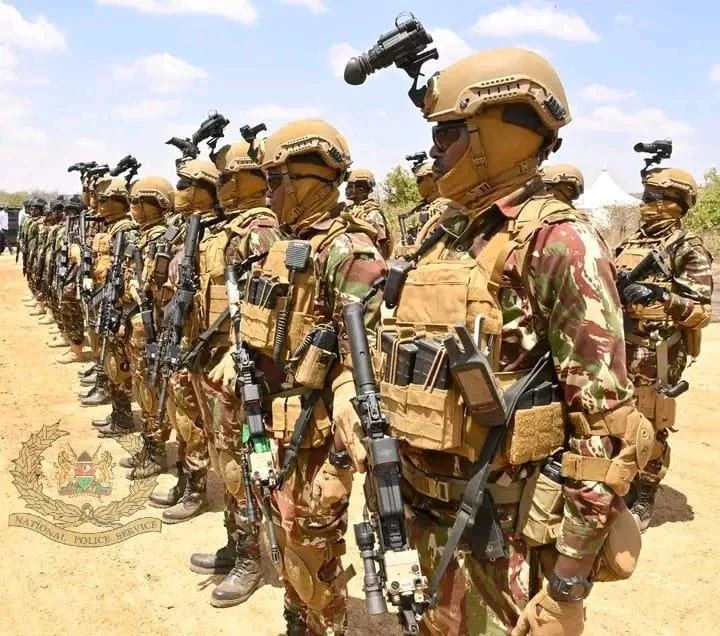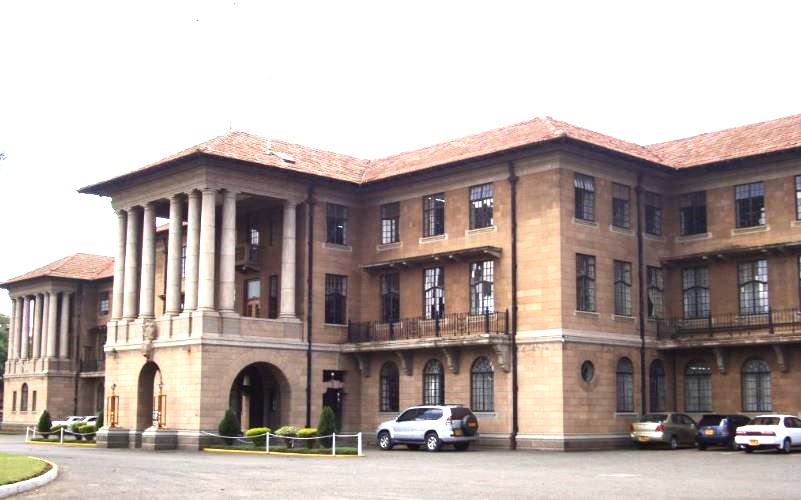By TWV Team
Security forces on Monday neutralised four suspected al-Shabaab militants and recovered a cache of weapons in a high-stakes, intelligence-led operation in the Najo and Guracho areas of Garissa County.
The elite Special Operations Group (SOG), acting on real-time intelligence and surveillance drone footage, tracked the armed suspects for several hours before engaging them in a firefight that led to their deaths. Authorities recovered two AK-47 assault rifles, a Russian-made PKM machine gun, radios, and a substantial quantity of ammunition at the scene.
“This successful operation followed a meticulously planned intelligence-led response. The militants were first spotted by a surveillance drone, after which the units tracked and engaged them,” stated a statement from Police Headquarters.
Security officials described the raid as a “major victory” in ongoing efforts to disrupt al-Shabaab activities, particularly in North-Eastern Kenya, a region long considered vulnerable due to its porous border with Somalia.
Security officials believe the Monday operation was linked to intelligence gathered after a deadly ambush last month in Lamu’s Boni Forest, where five SOG officers lost their lives and five others sustained injuries while pursuing militants. The attackers, believed to be part of a larger al-Shabaab cell, were planning a large-scale attack when they surprised the officers in the dense forest.
That incident underscored the persistent threat posed by al-Shabaab insurgents, who frequently slip across the border to launch assaults on both civilians and security personnel.
Authorities have attributed some of the group’s operational success to collaboration with local sympathisers, who provide shelter and logistical support. Civil servants, particularly teachers, and security personnel remain primary targets.
The National Counter-Terrorism Centre (NCTC) has issued warnings about the radicalisation of vulnerable youth, citing factors such as economic hardship, social marginalisation, and limited educational opportunities.
“The youth are being exploited by violent extremists who use sophisticated propaganda and social networks to recruit them into terror cells,” said Kibiego Kigen, Director of NCTC.
Kenya’s counterterrorism strategy now includes a two-pronged approach. On one hand, military operations continue to target and dismantle terrorist networks, especially within the restive Boni Forest under the multi-agency Operation Linda Boni.
On the other hand, authorities are intensifying soft-power initiatives aimed at disengagement, deradicalisation, rehabilitation, and reintegration (DDRR) of extremists back into mainstream society.
“We recognise that this war cannot be won by the gun alone,” Kigen added. “There is a pressing need to address the root causes and offer a path back for those willing to abandon violence.”
Police reiterated calls for residents of affected areas to work closely with security agencies. Locals are being encouraged to report suspicious activity and known collaborators to aid efforts to flush out militants and prevent further bloodshed.
Lamu, Garissa, and parts of Mandera and Wajir Counties remain under close surveillance as operations continue. Authorities have vowed to intensify their efforts until all terror cells are dismantled and peace is restored in Kenya’s vulnerable frontier counties.





